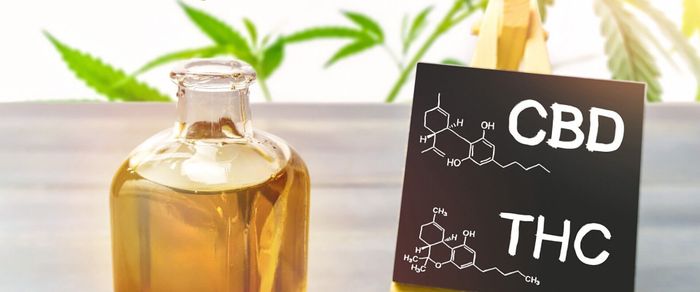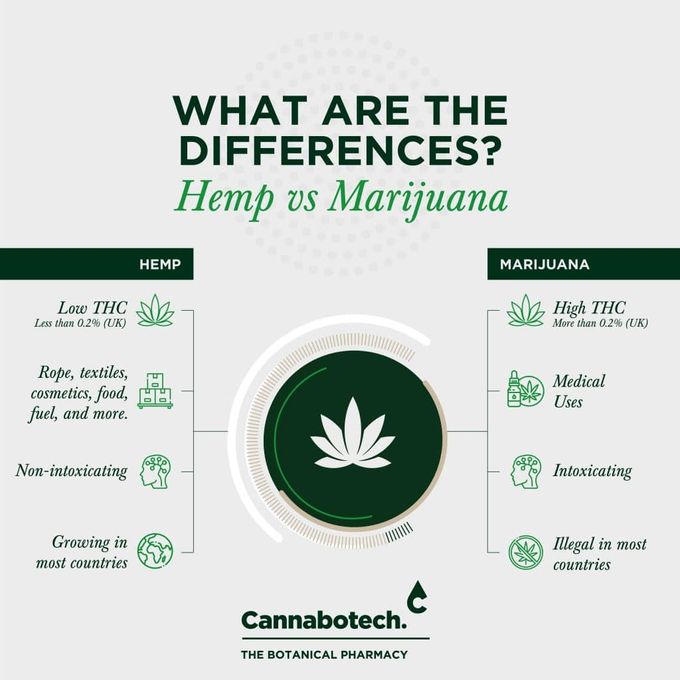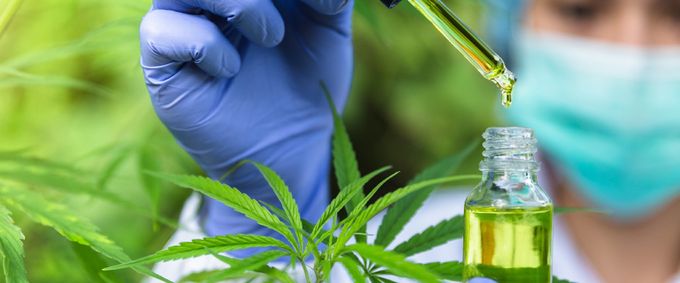The Differences Between Hemp, Marijuana, And Cannabis: What You Need To Know?
Updated January 25, 2024.

Cannabis: One species, many names. And that’s just plain confusing to many of us.
The terms hemp, marijuana, and cannabis have been used interchangeably for so long that many people think they are one and the same thing. But, as with all nuanced facts, the truth is found in the details. And, here, the details matter legally, therapeutically and regarding side effects. The distinctions can be the difference between suffering, or not, and a criminal record, or not.
With this in mind…
Defining Cannabis, Hemp, and Marijuana
What is cannabis?
There is much debate over whether single or multiple species exist. However, the term cannabis refers to its scientific moniker. For the latter, Cannabis sativa, Cannabis indica, Cannabis ruderalis, and Cannabis afghanica have been named as distinct varieties.
What is hemp?
Hemp is a variety of “a plant in the genus Cannabis.” In layperson’s terms, it refers to a plant grown and harvested for its fibre and seed. It is, by legal definition, low in tetrahydrocannabinol (THC), the psychoactive compound within cannabis that can cause a high.
Hemp’s use in clothing dates back to an unimaginable 8000 BC. The world’s earliest paper was crafted from this hardy plant. Massachusetts Institute of Technology noted that in “1535, Henry VIII passed an act compelling all landowners to sow 1/4 of an acre, or be fined.”
So, what went wrong? How did this much loved, durable, and multipurpose plant fall so out of favour?
Politics. In 1928, the Dangerous Drugs Act was introduced in the UK. Cannabis became a controlled substance. Hemp, with its many uses, became outlawed.
What is marijuana?
The National Centre for Complementary and Integrative Health defines marijuana as the: Parts of or products from the plant Cannabis sativa that contain substantial amounts of tetrahydrocannabinol (THC).
In essence, it’s the term given to the components and compounds that produce psychoactive effects, including a high.
Hemp, marijuana, cannabis: the differences in a nutshell
In truth, when we talk about the differences between hemp, marijuana and cannabis, we are, by legal necessity, being finicky. Regardless of the term, each one relates to the cannabis species. Its use and chemical compounds determine the definition given or the term used.
The Long History of Cannabis
Cannabis has an ancient, vibrant history. Emerging from Central Asia or western China, its healing properties were recorded in 2800 BC when listed in the Chinese Emperor Shen Nung’s Pharmacopoeia. From India to the Middle East and Europe, the cannabis plant has been revered for its therapeutic and religious uses.
According to the National Hemp Service, by the late 1800s cannabis extracts were sold widely in pharmacies and by doctors. Queen Victoria’s doctor even allegedly prescribed her hemp plant extracts for her period pain. Her doctor reported cannabis as “one of the most valuable medicines we possess.”
In more modern times, research has begun to unpack its mysteries. Cannabinol (CBN) was the first cannabinoid to be isolated back in the late 19th century. But deeper insight began with the uncovering of its structures and stereochemistry; CBD in 1963 and Δ9-THC in 1964 in the laboratory of Raphael Mechoulam.
Since the 60s, we’ve gained a greater understanding of cannabis, but modern medicine did not take much interest in the health benefits of the plant until the 1990s.
Cannabis: Its Therapeutic Uses
Shen Nung’s Pharmacopoeia ascribed benefits of cannabis for over 100 ailments; from joint pain to malaria to encouraging spiritual communion. The Vedic scriptures of Hinduism describe it as a source of happiness. Through its religious use, an understanding grew for its physical effects.
The article, History of medical cannabis, listed these benefits as “analgesic, anticonvulsant, anaesthetic, antibiotic, and anti-inflammatory. These properties allowed for the treatment of many diseases, including epilepsy, rabies, anxiety, rheumatism and even respiratory conditions such as bronchitis and asthma.”
From here, we turn to modern research…
The article, Therapeutic aspects of cannabis and cannabinoids, noted scientific research that has shown cannabis and its compounds can calm nausea and vomiting, reduce muscle spasticity, elevate appetite and mood in cancer patients, act as a painkiller, quell anxiety and depression, and enhance sleep.
While research continues to grow, anecdotal reports of further benefits are far broader.
The Effect Profiles of Cannabis: Uses and Products
Mother Nature has provided plants that interact directly with human biology to nourish and heal. In this case, cannabis communicates with the nervous system through the endocannabinoid system (ECS).
Wondering what the ECS is? Read our explanatory article, The Endocannabinoid System: How Does Cannabidiol Work In The Body?
Its two best known chemical compounds, cannabidiol and tetrahydrocannabinol, exert their effects through the ECS. The result is different yet complementary effects.
Cannabidiol
Cannabidiol appears to calm the central nervous system. This may quell anxiousness, relieve mental health disorders, provide anti-inflammatory and nerve protective benefits, soothe pain, and promote the healing of injuries.
CBD is available in a variety of legal products. From topicals to gummies, tinctures to oral drops, food supplements to skincare creams.
Tetrahydrocannabinol
Tetrahydrocannabinol also works with and on the nervous system. This natural compound has many potential benefits…
Research has shown that those with stubborn nerve (neuropathic) pain may find respite.
A study published in the journal, Clinical Drug Investigation, found that THC brought “statistically significant improvement in global symptom severity, sleep quality, frequency of nightmares, and PTSD hyper-arousal symptoms.”
There are other reported benefits including that THC may enhance sleep, aid relaxation, and even help food to taste better for those undergoing chemotherapy.
But, THC comes with two important caveats: It has psychoactive properties that may result in a high. It’s (for the most part) illegal in the UK.
THC is available, at least in theory, under medical approval only.
What is the Difference Between Hemp-derived CBD Versus marijuana-derived CBD?
Cannabidiol’s benefits do not change depending on the type. In essence, the difference lies in the other chemical constituents.
Marijuana-derived CBD contains higher THC and lower CBD. It may get you high and you will likely fail a drug test. But hemp-derived CBD contains a higher CBD level.
CBD can also be produced to be THC-free, like our products are. This means you gain the health benefits without the risk of stepping outside the law.
How did hemp become grouped with marijuana?
In truth, politics. When cannabis became a controlled substance under the Dangerous Drugs Act, so did hemp. While its chemical composition, effects and benefits are different, the governmental policy has lethargically lagged… Public sentiment is slowly coaxing change. Sadly, the process is slow.
Can you get “high” from hemp?
In short, no. By definition, hemp contains very low levels of the psychoactive compound, THC. Our hemp extract is entirely THC-free.
How can you tell the difference between hemp, marijuana and cannabis?
That’s a good question! Let’s take a look…
- Appearance: Remember that cannabis is the plant that produces hemp and marijuana. So, you won’t be able to detect any difference by sight alone. It’s the chemical composition that matters here.
- Chemical composition: Again, we must hark back to the legal definitions, to separate hemp and marijuana. These are based on THC alone.
- Hemp: Hemp contains no more than 0.2% tetrahydrocannabinol (THC).
- Marijuana: Marijuana (aka pot or weed) is the term given to the components and compounds that can produce a high. In legal terms, it’s the non-licensed cannabis plant that contains THC.
Is hemp cultivated differently than marijuana?
To be legal, the hemp must be grown industrially. This requires a license from the Home Office for a commercial enterprise, a farm on which to produce and harvest this agriculture venture, and destruction of the resultant flowers. Think of a wheat field. Now simply imagine cannabis plants instead.
For marijuana, we often imagine blacked out blinds and in-house hydroponic crops. This is, in large part, a reflection of the illegal nature of the marijuana industry. However, it can be grown outside just like its hemp sibling. Except, of course, this is illegal in the UK.
How are hemp varieties chosen?
As we’ve mentioned, hemp, by definition, must contain THC at a level of 0.2% or less. In the UK, this is the first step to remaining legal. Then there are other important considerations a company uses to choose a variety…
- Stem quality: Varieties with fibrous stem are chosen to maximise the production of long fibres and biomass. This is ideal for the production of building materials, fuel, pulp and paper, and textiles.
- Cannabinoid content: As one would expect, different varieties deliver different CBD content. As the dose is key in cannabis’ benefits, producers can opt for a plant higher in CBD. Hemp for example. Production to heighten CBD must include a deep understanding of the impacts of stress and the determinants of growth. For example, soil composition, amount of moisture, pH level, and more.
- Resistance to disease: All plants can develop disease; cannabis is no exception. To minimise pathology, resilient varieties are picked. By limiting the risk of mould and pests, for example, the application of pesticides and insecticide can be reduced or avoided.
- Time to harvest: Depending on the variety and environment, it takes roughly three to eight months from seed to flower. This can be sped up when cultivated indoors where cues like the amount of light can be tweaked.
- Hemp oil content: With polyunsaturated and essential fatty acids, the minerals calcium, iron and magnesium, vitamin Bs, C and E, plus natural antioxidants and cannabinoids, the humble hemp seed is a nourishing powerhouse.
Depending on the needs of the grower and the end customer, plants can be chosen and cultivated to maximise nutritional makeup.
The Cannabis Takeaway
The differences between hemp, marijuana, and cannabis lie in the details rather than the appearance.
Because the UK’s CBD industry has exploded in popularity in recent times, it is possible to legitimately purchase a CBD product that contains a higher than legal level of THC. This can run you afoul of the law.
To ensure your safety, our products are manufactured in facilities overseen by:
- current Good Manufacturing Practice (cGMP)
- International Organization for Standardization (ISO) certified facility.
We comply with local laws for CBD hemp extract and test to ensure compliance and guarantee that our hemp extract is THC-free. That means you gain the incredible benefits of this natural product, without any risk of a failed drug test.
That, we believe, is a difference that matters!











